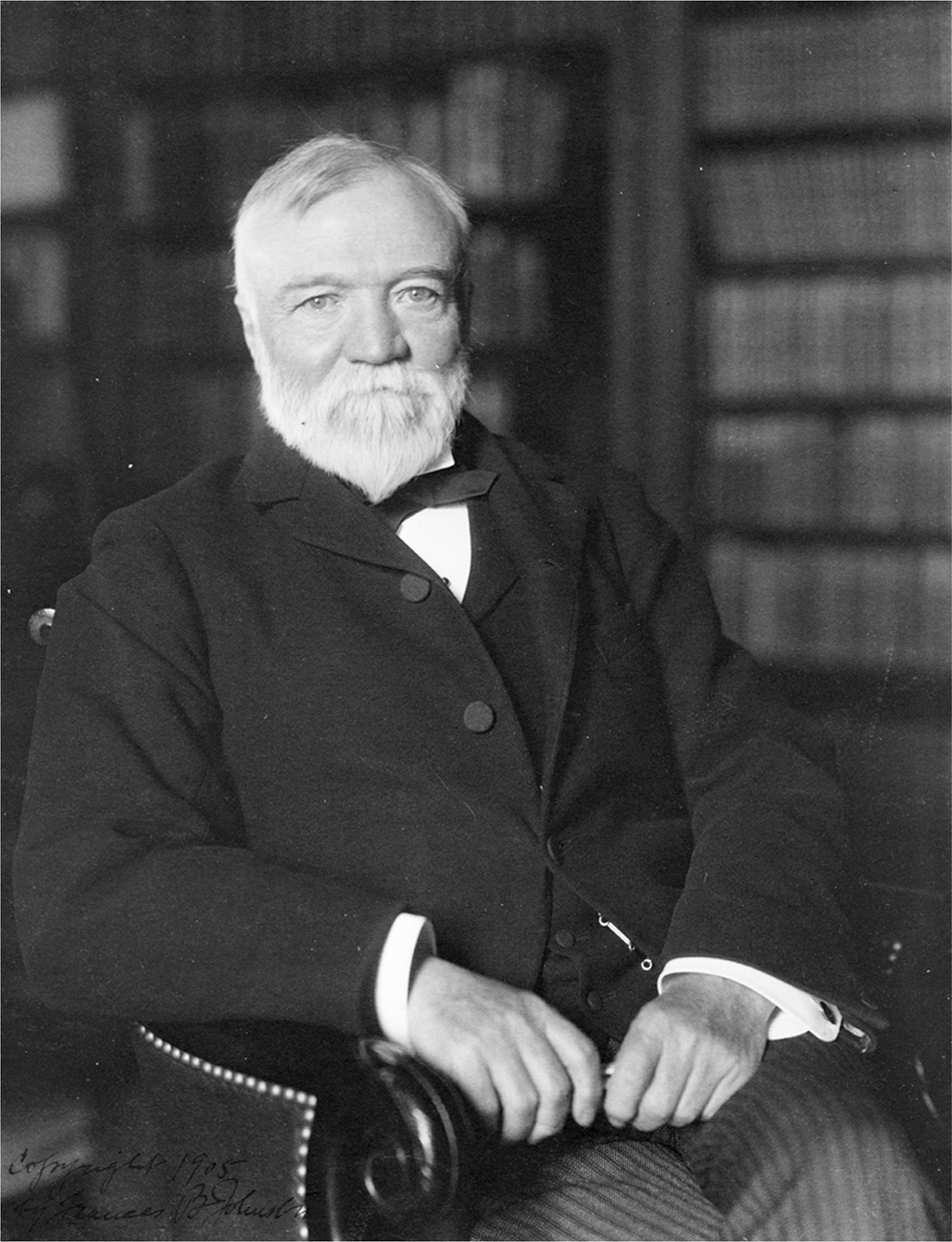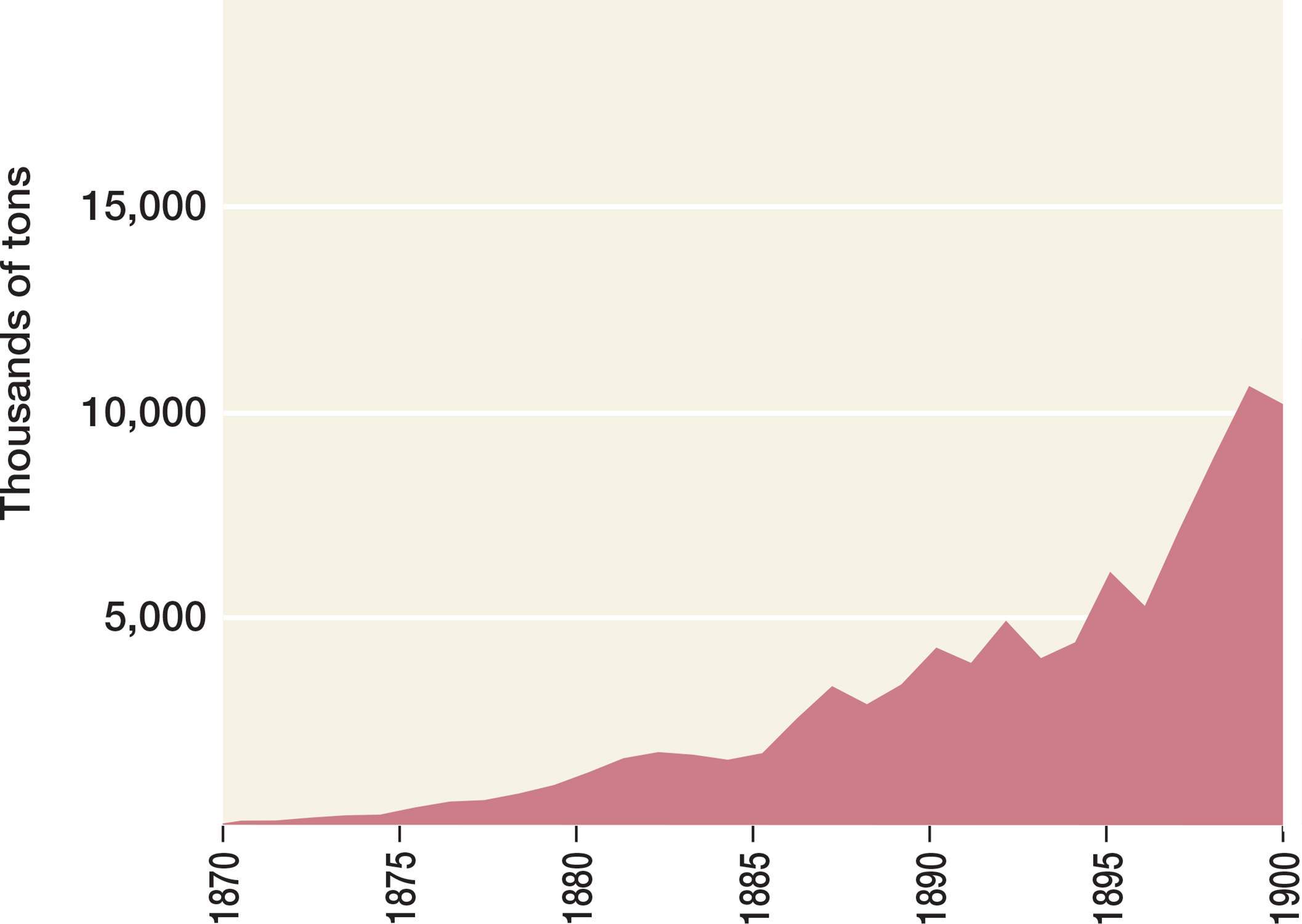The American Promise:
Printed Page 500
The American Promise Value
Edition: Printed Page 476
Andrew Carnegie, Steel, and Vertical Integration
If Jay Gould was the man Americans loved to hate, Andrew Carnegie became one of America’s heroes. Unlike Gould, Carnegie turned his back on speculation and worked to build something enduring—

The growth of the steel industry proceeded directly from railroad building. The first railroads ran on iron rails, which cracked and broke with alarming frequency. Steel, both stronger and more flexible than iron, remained too expensive for use in rails until Englishman Henry Bessemer developed a way to make steel more cheaply. Andrew Carnegie, among the first to champion the new “King Steel,” came to dominate the emerging industry.
Carnegie, a Scottish immigrant, landed in New York in 1848 at the age of twelve. He rose from a job cleaning bobbins in a textile factory to become one of the richest men in America. Before he died, he gave away more than $300 million, most notably to public libraries. His generosity, combined with his own rise from poverty, burnished his public image.
While Carnegie was a teenager, his skill as a telegraph operator caught the attention of Tom Scott, superintendent of the Pennsylvania Railroad. Scott hired Carnegie, soon promoted him, and lent him the money for his first foray into Wall Street investment. As a result of this crony capitalism, Carnegie became a millionaire before his thirtieth birthday. At that point, Carnegie turned away from speculation. “My preference was always manufacturing,” he wrote. “I wished to make something tangible.” By applying the lessons of cost accounting and efficiency that he had learned with the Pennsylvania Railroad, Carnegie turned steel into the nation’s first manufacturing big business.

In 1872, Andrew Carnegie built the world’s largest, most up-
The great productivity Carnegie encouraged came at a high price. He deliberately pitted his managers against one another, firing the losers and rewarding the winners with a share in the company. Workers achieved the output Carnegie demanded by enduring low wages, dangerous working conditions, and twelve-
By 1900, Andrew Carnegie had become the best-